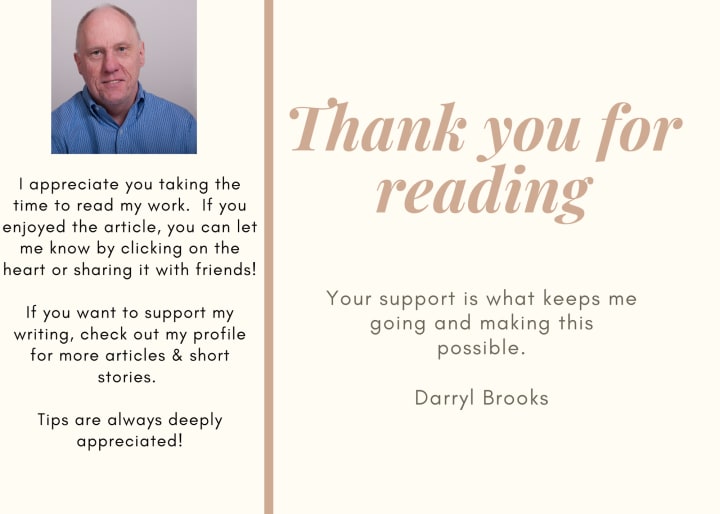How to Use Evernote
A Beginner’s Guide

I’ve been using Evernote for so long, 10 years now, that I had almost forgotten what it was like to be a beginner. Mostly, I wanted to clarify what it was good for and what it wasn’t, so people that hadn’t tried it could evaluate whether it fits their needs. The idea arose from everyone calling it a ‘note-taking app,” including Evernote itself. I intended the article to be a one-off introduction.
The first thing to do is to open an account and download the software and apps. For this tutorial, I will be using the web version, although I highly recommend the desktop version. It has more power and flexibility. But for the screenshots in future articles, I needed a new, blank account, so I will be using that on the web. So, head over to Evernote.com and sign up.
Before you go further, I want you to notice the Sign Up For Free button. That is the one we will be using, and I encourage you to get started for free. You can click on the Plans link to get an idea on pricing, but the free plan should suffice for long enough that you can determine if it is worth paying for. I discuss some of these differences in the first article also. FYI, I am an Evernote Premium user and have been almost since the beginning, with short forays into the free version occasionally. For me, having 12K notes in the system, it’s worth the price for the added features. You do you.
Click on the Sign Up button and you are taken to a standard sign up screen where you give it an email address and password or sign up with your Google account. Once you have an account, go ahead and play around with it a bit. Explore the menus and read some of the excellent help advice there. In particular, there is a Get Started section. You may have gone through it when you began. If not, give it a go.
In particular, you want to become familiar with notebooks and tags. If you are accustomed to other systems that use either or both of these organizational structures, you may already be familiar with them. Know, however, that while the tag hierarchy is very flexible, the notebook hierarchy is not. There is only one level of nesting, called stacks, and it is only a virtual hierarchy. If you export data to other systems, each notebook is separate; there is no hierarchy. For that reason, every notebook needs a unique name, regardless of whether it is in a stack or not. Despite these caveats, I use notebooks rather than tags. I know I am in the minority there, but it’s how I think.
I’ll cover notebooks and tags in the next article, but I wanted you to at least take a look at them. Also, as I said above, this will be using the web version. The exception to this will be using your phone’s camera or microphone to create a note. They are working to get their product uniform across all platforms, but they aren’t there yet. When you first start with Evernote, you will only have one Notebook and it will be the default one where all new notes are created unless you modify that.
Before you can organize data, the first thing you need to do is get data into Evernote, and that is what we will focus on today. I also think that, above everything else, this is where Evernote shines. There are at least 7 ways to get data into Evernote. Some of these are slight variations on each other, but I want you to make sure you understand how flexible and powerful the system is.
- Enter a text note
- Record a note
- Create a note using voice to text
- Create a note with your camera
- Email a note into Evernote
- Import a document using a default folder
- Scan a document into Evernote
- Use the Web Clipper
Enter a text note
As I’ve discussed, Evernote is usually referred to as a note-taking app. To me, Notepad is a note-taking app. If that’s all you need, Evernote is extreme overkill. Having said that, it is very good at taking simple notes.
There aren’t too many fancy formatting functions available, but it takes notes. If you need fancier formatting, create your document someplace else and then import or cut and paste your document into a blank note.
There is more than one way to do most things in Evernote. For the most part, I will describe the easiest or quickest. But, for example, to create a new note, you can click on the New Note link at the top of the sidebar, You could create and use a New Note link in your Toolbar, and you can click on File-New Note. But the easiest way and the way I have created all manually produced notes is Ctrl-N. (Command N on Mac).
This will create a new blank note in whatever notebook was highlighted when you created it. You can also create a note in this fashion using Templates, but that is a subject for another day. (I want you to keep coming back, you know).
Once you have a new note, you can just start typing, drag things into the window, or use any of the formatting tools across the top. They are limited, but for most, they get the job done. One formatting tool I will touch on is tables. If you’ve ever created a table in Word, that’s pretty much what you have. If you want something fancier, create it in Excel, then copy and paste it into your document.
Record a Note
This is a feature I haven’t used often, but it can be very handy if you are out with just your phone and need to make some quick notes. Just hit the new note button or widget on your phone, select the microphone icon, and start talking. This will embed an audio file into a new note titled simply, Audio, into your default Notebook.
Voice to Text
I use this feature much more often. I frequently use it to ‘write’ articles if I am out walking or find myself stuck somewhere with nothing but my phone. It does a respectable job of translating, but it takes a little practice to get the most out of it. You will need to get into the habit of speaking like written sentences rather than spoken ones. In particular avoid the umms, uhs, and other pauses we all frequently use in our everyday speech.
Create a Photo Note
I use this one all the time. It’s handy if you are out shopping and need to remember a size or price. I use it for inventories and household sizes, colors, shapes, etc. You probably use your phone’s camera for a lot of this kind of thing already, but doing it in Evernote allows you to organize it and make it easily found later.
Evernote also has an automatic mode when using the camera. This mode will use Optical Character Recognition (OCR) to convert a document to a PDF. This is great for taking quick images of any kind of documentation if a proper scanner isn’t available. Many people use this function instead of a scanner. It is very good at scanning business cards. Images taken this way are then searchable by the extremely good search capability built into Evernote.
Email Into Evernote
With a paid subscription to Evernote, you can send an email directly to Evernote. The note will appear into whatever Notebook you designate as the default. I don’t use this as much as I used to as I have gotten more discretionary in what I email to Evernote. Since my email product has a great organization system of its own. I tend to segregate emails I want to keep into the short and long term. Only things I may need to reference very far into the future go to Evernote. In looking at competition, this, to me is the biggest failure of Notion.
Import From a Default Folder
This is one I use many times daily and sets it apart from most of the competition. I also use this in conjunction with the next section on scanning.
In the Windows version, you can define a folder, or multiples if you want, as your default Evernote folder(s). Then any file that gets put into that folder is immediately uploaded into Evernote. The name of the file will become the name of the note. This is where all of my important documents go regardless of the source. I’ll get back to why in just a minute.
So, if it is a file that is already on my computer for some reason, I move or copy it into my default folder, and it immediately appears in my default notebook in Evernote. If I get an email with an important attachment, I may or may not forward that email to Evernote, but I will always save a copy of the attachment in my default folder.
The reason I do it this way besides the obvious convenience is that now that important document is in many different places, which is essential for a good backup system. Besides being in my local copy of Evernote and the cloud version of Evernote, it’s in that default folder on my hard drive. That folder along with the rest of my hard drive is backed up to external drives and another cloud backup. So minimally, that important document that would have once been only paper is now in at least 5 different places.
Scan Into Evernote
I don’t get too much paper anymore. As much as possible, I have documents emailed to me as PDFs, which get into Evernote via the methods described above. But some paper still comes in, plus I have a backlog of old paper I want to get rid of. Enter the scanner.
There are dedicated scanners that are set up to send docs directly into Evernote, but I find them to be expensive and/or cumbersome. I prefer using my plain old inkjet printer. Cheap and easily replaceable. The one caveat is that you want one with a document feeder. You don’t want to have to do this one sheet at a time.
The first thing you will do is follow your printer’s instructions to set up a destination on your computer for scans. That destination can be your Evernote default notebook to possibly save a step, but I don’t do it that way.
First, I’ll describe my method and then I’ll explain why I don’t scan directly to Evernote. My scan destination is a folder in my Documents folder named Scanned. Rather than use the app on the computer, I just load the docs into the feeder and hit the scan button. They end up in my scan folder with names like Scan01, Scan02. etc.
Next, I look at that folder in Windows Explorer, rename the docs to something descriptive, and them move them to my Evernote folder, where they are immediately imported. A note about my naming convention. Besides a descriptive name, almost all documents begin with the six number dates in the form of YYMMDD. In this way, any set of documents sorted alphabetically will be in that date order. I can always sort in that date order regardless of any change to the actual note date. Additionally, sometimes the date I use isn’t the filing date, but the action date. For instance, scanned bills are entered with the due date.
The reason I don’t scan directly into Evernote is the Scan01, Scan02 naming convention. If I scan directly into Evernote, the names are meaningless. Obviously I can change the name of the note in Evernote, but the underlying file, which is still in my Windows Evernote folder, has the original name. This makes it a disaster as a backup. Another thing you need to be aware of is, if I change the name in Windows in the Evernote folder, I will then have duplicate notes in Evernote; one with the original name and one with the new name. After years of experimentation, I have found my method to give me the best results in the fewest steps.
Web Clipper
The web clipper in Evernote is one of the best I have seen. It will not only clip the page you are viewing, or the entire article, but has several other options. And this utility doesn’t just automatically put the results in your default notebook, although it can. You can choose the notebook, default to last used, or use its smart feature which attempts to guess at the correct notebook based on the content of the page. I have found that last one to be a bit dicey, so I tend to use the default notebook.
One that I use frequently is the screenshot. This brings up a rectangular guide you can use to grab any portion of the screen. This is great when you just need a paragraph or a small section of the screen.
But by far my favorite web clipper option is the Simplified Article. This brings up a stripped-down version of the page with no ads, videos, gifs, or any of the other annoying crap that is so pervasive in today's web browsing. I frequently find myself using this feature just to read a web page whether I want to clip it, or not.
So that’s it on how to get data into Evernote. If this article gets anywhere near the response as the first one, I will be writing a third where we get into more of the nuts and bolts of Evernote. As always, thank you for reading.

About the Creator
Darryl Brooks
I am a writer with over 16 years of experience and hundreds of articles. I write about photography, productivity, life skills, money management and much more.







Comments
There are no comments for this story
Be the first to respond and start the conversation.